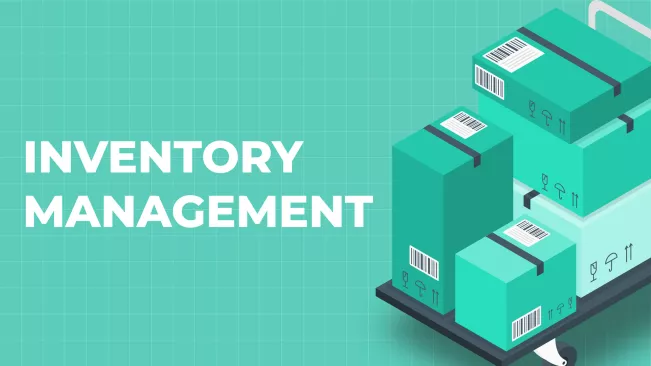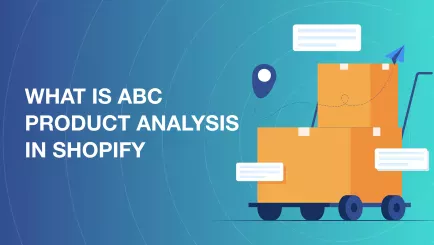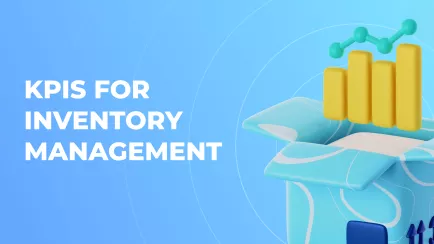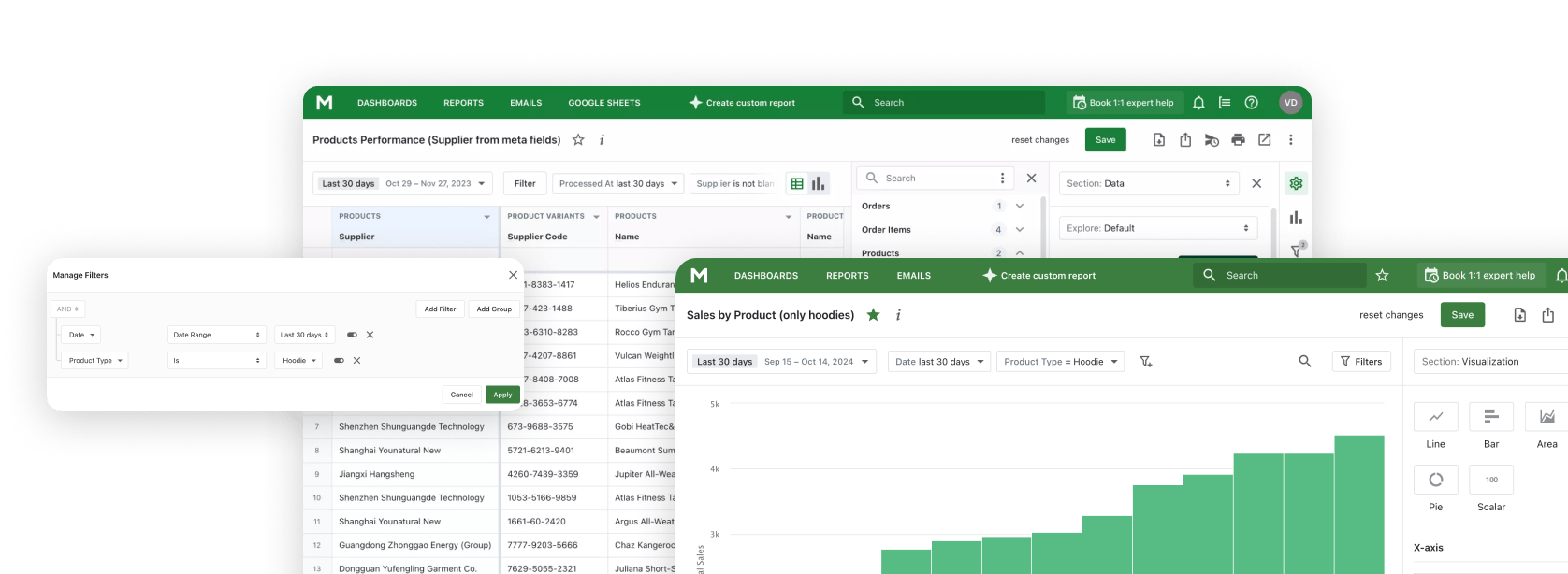Introduction
"3 warehouses, 20,000 parcels, plus a wholesale buyer for 1,000 products, and this is the volume of sales for the week before Christmas. In the last two days, we thought that we would not be able to cope - chaos and not having the necessary products at hand. You have such convenient Shopify Inventory Reports, maybe will you be able to organize proper inventory management in our warehouses? This week before the holidays showed that we cannot do without it."
This message was sent to us by one of our regular customers. And we realized that this problem is most likely in many stores. If on quiet days it is still possible to work with a bad organization, then during such hot periods there may be problems with deliveries, stocks, or sales. Therefore, we decided that it was time to refresh our memory and understand the features of inventory management for Shopify stores.
Why is Inventory Management Important on Shopify
Shopify inventory management involves building such a system of circulation of goods in the warehouse so that the store always has the necessary level of inventory that meets the needs of customers. It is important to maintain a balance in the number of stocks, to avoid both excesses and shortages. Shopify Reports should show sufficient inventory levels.
You can assess the importance of inventory management on Shopify if you consider which areas of the store's work will be affected by its poor organization:
- Customer relations - delivery delays, lack of popular and necessary products. In this way, the store's reputation and customer relations fall.
- Increase in the cost of servicing goods in the warehouse. If you do not know how to use all the available goods, then some of them will turn into dead inventory over time. However, it is necessary to continue to pay for the rent of the warehouse and the maintenance of the goods.
- You do not return the money invested in the product.
- The profit of the store is falling. An increase in the cost of goods, settlement of conflicts, and a decrease in purchasing activity significantly affect the profitability of the store.
Therefore, inventory management is important because it organizes the work of the store with goods in stock. This affects the speed of delivery, the speed of updating goods in the warehouse, and therefore the growth of profits. The store's reputation and customer relations can also depend on it. And if inventory management allows you to avoid hackers during the hot seasons, your reputation will improve in the employer market as well.
Benefits of Shopify Inventory Management
Structuring your inventory and bringing it into a single system provides some benefits. If you can structure your inventory, you will have the following benefits:
- You avoid overstocking and dead stock.
- You can better forecast demand and purchase products on time.
- Profitability increases and product turnover increases.
- Order fulfillment becomes easier and the number of customers increases.
- Inventory tracking and valuation becomes automated.
- You can configure inventory for sales through many channels.
- Inventory holding and maintenance costs are reduced.
- It is easier to scale the business.
Common Challenges of Shopify Inventory Management
How to manage inventory in Shopify? So that you can profit from purchased goods without problems. But it is worth knowing what unforeseen situations can happen and how to get out of them.
Stockouts
A situation when there is an order for a product, but the product itself is not in stock. There are several ways to solve this problem:
- Close the sale and indicate that the product is out of stock;
- Do not close the sale, or accept pre-orders, but simply ship the product when it appears.
Both scenarios have their advantages and disadvantages, we described in more detail in the article.
To avoid this situation, you should learn to forecast demand based on available sales data for previous
years.
Overstocking
In this case, the problem also arose due to insufficiently good demand forecasting. To solve this problem, you should offer a discount on these products or add these products as a gift to others.
In general, this problem can lead to:
- Increased storage costs;
- Product obsolescence;
- Unpayable investments;
- Stagnation of warehouse space.
Dead Stock
This problem occurs when a large part of the products could not be sold. There are many ways to fix this. However, it is easier to avoid this problem. To do this, just follow these steps:
- Use FIFO (First-In, First-Out) to prevent inventory obsolescence;
- Automate inventory notifications and reorder recommendations;
- Regularly check and update product lists;
- Monitor competitors' prices to stay competitive;
- Avoid bulk purchases unless you are sure what will be ready.
Explore related reports
What Are The Best Ways to Handle Shopify Inventory
There is no single universal tool for the best inventory management in Shopify. However, there are tools that, when combined, can be used to conveniently manage inventory:
- Warehouse Space Allocation and Product Procurement:
- Using ABC and XYZ analysis, the popularity of products is determined and placed in the warehouse accordingly, so that all popular ones are conveniently accessible.
- Demand forecasting will allow you to determine the approximate date of re-purchase. Inventory Planner helps you do this without additional effort.
- Product Flow Management:
- Inventory and Warehouse Control:
You always need to know which specific product to send so that there are no expired products left. This is easy to do if you introduce product sales systems: FIFO, LIFO, and WAC. Then it will be clear which products to send, where to put new ones and what is the shelf life of the products.
First of all, you should always know the cost of your inventory. The FIFO, LIFO, and WAC product sales system will also help with this because then the calculations proposed by each of the methods are automatically applied. In addition, Shopify Inventory Value Report stores everything in one place and does not require additional calculations from you.
Strategies for Optimized Inventory Management
What we described earlier are tools for inventory management. In order for them to work, you need to come up with your own strategy. If it is simple, it is a plan, erroneous actions to achieve the set goals. Like the strategy, you choose the goal yourself: increase profits, reduce the number of dead stocks, expand the assortment without reducing the efficiency of work. Depending on the chosen final result, you develop an action plan.
There are standard strategies that help stores achieve common goals. If you have special conditions, you can make an action plan from existing ones:
- Goal: Setting up the delivery department / avoiding critical situations / stable replenishment of stocks without excess and shortage.
- Goal: Reduce the cost of maintaining goods or increase the turnover and payback of goods.
- Goal: Increase the range of goods without losing efficiency.
- Goal: Reduce the burden on the delivery department during peak periods.
- Goal: Minimize the occurrence of surpluses and shortages.
Strategy: automating the system and implementing automatic inventory tracking. Using the FIFO/LIFO/WAC system to organize an internal product control system. Such actions are suitable for both new stores and those that did not have inventory management in Shopify.
Strategy: Just-in-time delivery (JIT). The inventory level is minimally acceptable. New goods are purchased only when needed. This strategy is suitable for stores with stable demand that already have their own customer base.
Strategy: Divide your products into collections and tags. Enter this distribution into the store's electronic system so that Shopify can manage inventory. Highlight those products that are purchased more often and reduce the time for their re-purchase.
Strategy: Do demand forecasting. Use reporting to study critical periods in previous years. Set the starting points of increased demand, purchase the necessary goods in advance. This will depend on your customer base and the activity of marketing actions before peak periods.
Strategy: Set reorder points. Reporting and calculating days inventory on hand will help a lot with this. Calculate the minimum required amount of inventory and monitor the level of goods in the warehouse.
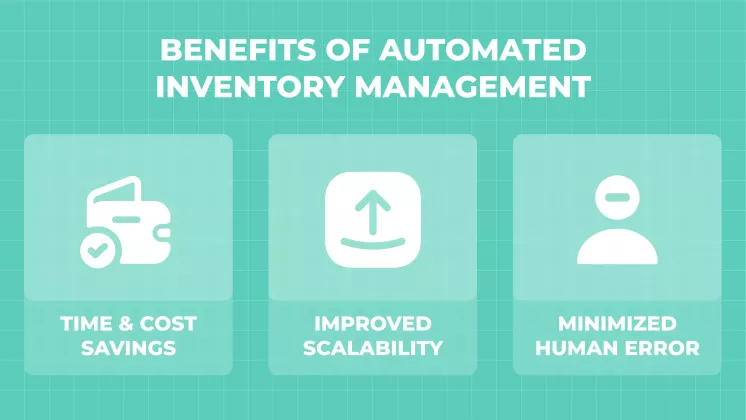
Automated Inventory Management for Shopify
The best inventory management system for Shopify stores should be selected depending on the specifics and needs of the business. We have selected four inventory management integrations that can help organize the process.
1. Mipler:
- Accurate and detailed reporting;
- All information about all processes in one place;
- Creating custom reports for special needs;
- Automation of all processes.
2. Assisty Inventory Management:
- Sales and supply analytics;
- AI for predicting future store needs;
- Convenient interface;
- Customization for individual needs;
- Automatic calculation of repurchase dates;
- Can control multiple sales channels.
3. Prediko:
- Demand forecasting;
- Analysis of seasonal changes in customer needs;
- Inventory planning system;
- Calculation of inventory profitability.
4. Genie:
- Real-time inventory control;
- Notifications about unforeseen changes in inventory, demand, purchases;
- Communication with suppliers via the application;
- Weekly audit of work results;
- Forecasting store development.
How to Choose the Best Shopify Inventory Management Software
We have described several software products so that you can organize your inventory. It remains to choose the one that suits you. It is important to take into account all the features of the business so that the program facilitates your business processes. When choosing, you should consider the following factors:
- Functionality: available demand forecasting, reporting, customer support, order tracking and analytics.
- Scalability: choose the software that will be able to work flawlessly with the further expansion of the customer base and increase in sales.
- Ease of use: you understand the software interface and can teach others to use it in 2 days.
- Customer support: if you have problems with the program, you should be able to solve it in a few hours.
- Cost and return on investment: of course, the payment for using the software product will be taken into account in the cost of maintaining inventory. Choose the one in which the ratio of quality of work and cost of use has the best results for you.
We have made a table for you, evaluating the proposed programs according to our factors. One of them is definitely your ideal.
| App | Functionality | Scalability | Ease of use | Customer support | Cost and ROI |
|---|---|---|---|---|---|
| Mipler | 4 | 5 | 5 | 5 | 5 |
| Assisty | 5 | 5 | 5 | 5 | 5 |
| Prediko | 5 | 4 | 4 | 5 | 4 |
| Genie | 4 | 5 | 5 | 3 | 4 |
Boost Your Business with Efficient Inventory Management
We gave a lot of advice. You can use as you see fit. However, it is worth noting that a properly built inventory management system will allow you to see positive changes in various aspects of the store's operation.
- Reduction of operating costs. There will be a minimum of excess stocks, goods will change quickly, therefore the costs of caring for them will fall. This will be reflected in the quality of products, return on invested capital, speed of turnover of goods and profitability of the store.
- Improved understanding of customer needs. You will see in which periods buyers are
better off buying certain products. Based on this, you can:
- Confidently launch marketing campaigns;
- Determine the specific terms of repeated purchase of goods;
- Forecast profits with great accuracy;
- Avoid the situation of excess goods or dead inventory.
- Increasing the level of customer satisfaction. They will be able to order the products that are available. In this way, the number of abandoned carts or canceled orders will decrease. Your reputation will also grow.
- You will be able to improve relations with the workers of your warehouse. The inventory management system of Shopify store will help to adjust the pace of work and avoid stressful situations.
In general, setting up inventory management with Shopify will be able to improve the operation of your store, increase profits, increase the variability of products, and expand sales channels.
